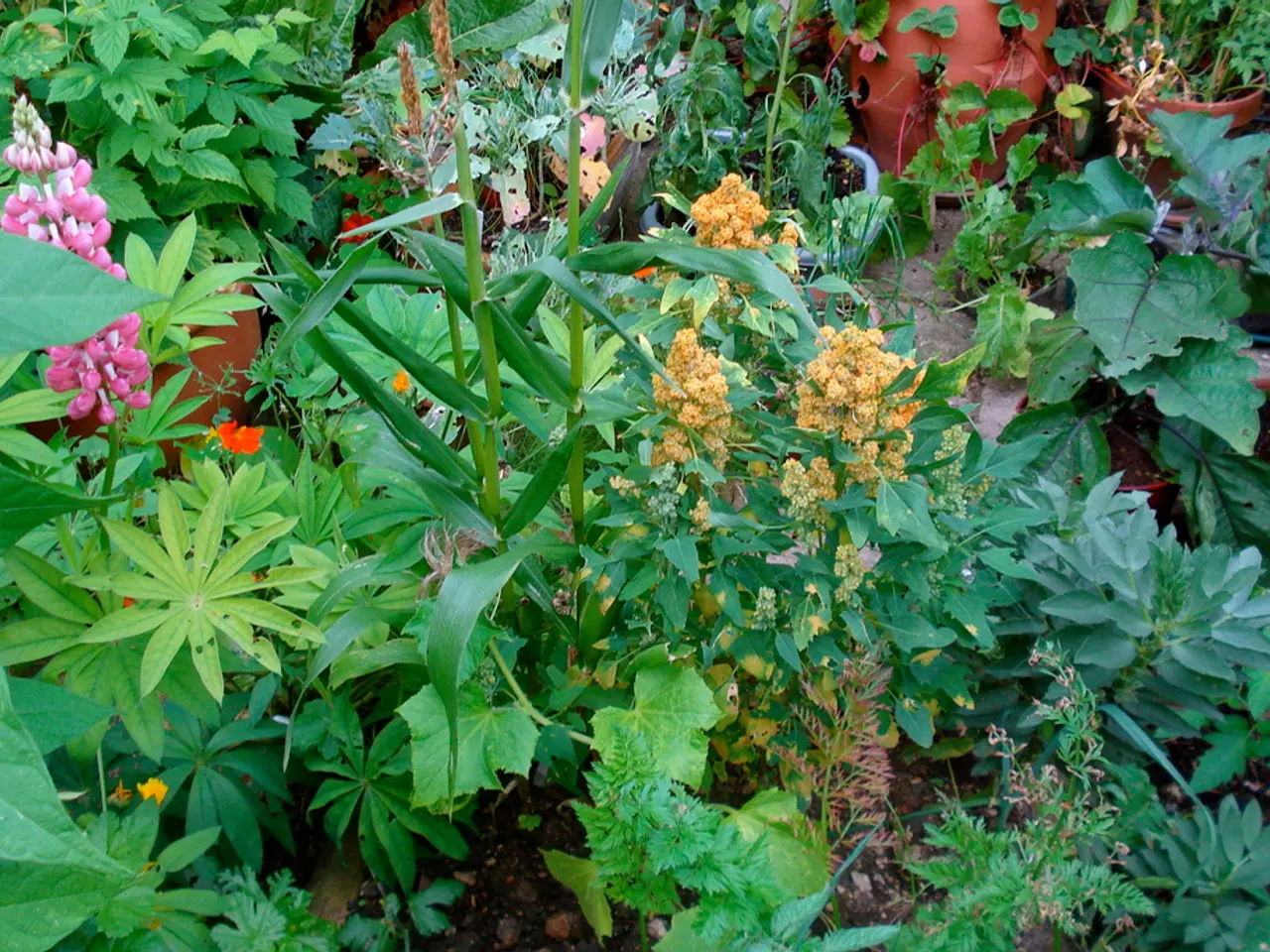Guide for Cultivating a Water-Conservative Garden That Remains Vibrant
Xeriscaping, also known as water-wise landscaping, is a method of garden design that conserves water and uses innovative conservation techniques. This approach to gardening is gaining popularity as more people seek to reduce their water usage and create a sustainable outdoor space.
When planning a water-wise garden, maintenance and water needs are crucial factors to consider. The selection of plants is key, but it's not limited to succulents. Hundreds of plant options, including trees, shrubs, flowering bushes, and grasses, can be used.
Automatic irrigation systems are a more water-wise option, saving time and ensuring that plants receive the right amount of water. These systems should ideally give plants the water they need, not more or less, and should release water slowly so that it penetrates the soil and gets to the root area. Manual watering or watering with a sprinkler that releases water closer to the ground and the plants' root system is an option for those who do not wish to install an automatic irrigation system.
Before starting garden design, it's recommended to plan carefully, considering landscape needs and attributes, such as natural water levels and the time you wish to invest in maintenance. When designing a new landscape, consider including an automatic irrigation system.
Soil preparation is essential for a successful water-wise garden. Understanding your current soil type (sand, loam, clay, or a mix) and how to amend it is crucial. Healthy soil should offer plants a nutrient-rich place to grow, holding water but also permitting air in and water out. Organic compost or well-aged manure can be used to amend the native soil.
Grouping plants in hydrozones, which means grouping plants with similar water requirements together, can make irrigation more efficient. Mulching can control weeds that compete with cultivated plants for water and help soil retain water, reducing the need for irrigation. Organic mulch, such as compost, aged manure, and dried leaves, can also decompose into the soil, improving its structure.
Using native plants can be a low-maintenance addition to a water-wise landscape, as they are adapted to the existing conditions. However, they are not the only option. Teo Spengler, a master gardener and docent at the San Francisco Botanical Garden, has studied horticulture and written about nature, trees, plants, and gardening for more than two decades. She emphasizes that a water-wise landscape can be as attractive as a traditional garden, featuring vibrant colors, a variety of plants, and even a lush lawn.
In conclusion, embracing water-wise gardening is a step towards creating a sustainable and beautiful outdoor space. By considering factors such as garden design, soil preparation, plant choice, mulch, and irrigation method, you can create a garden that conserves water and thrives for years to come.
Read also:
- Struggles of Nepal's Himalayan wildlife amidst expanding livestock populations and road networks (opinion piece)
- Coverage of Medical Treatment Questioned: Patient Receives Bill for $17,000 Despite Insurance Promise of Coverage
- Social Change Advocates : A Compilation of Zines as Driving Forces
- Guide to Choosing the Best Animation Company in Belgium: A Comprehensive Overview




